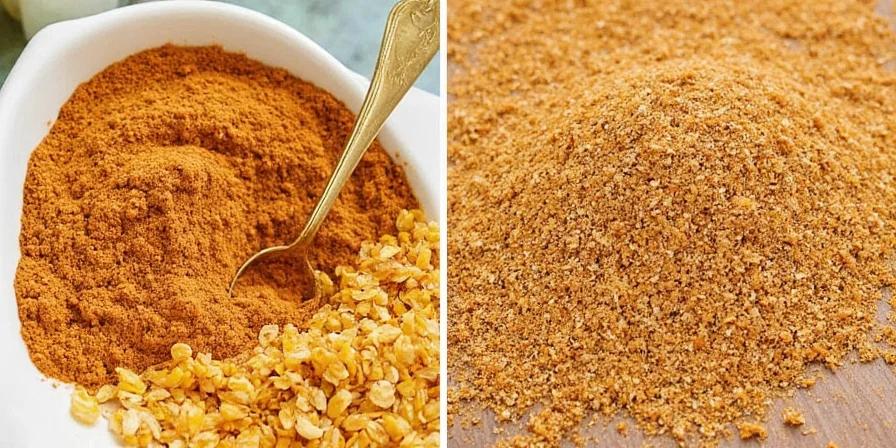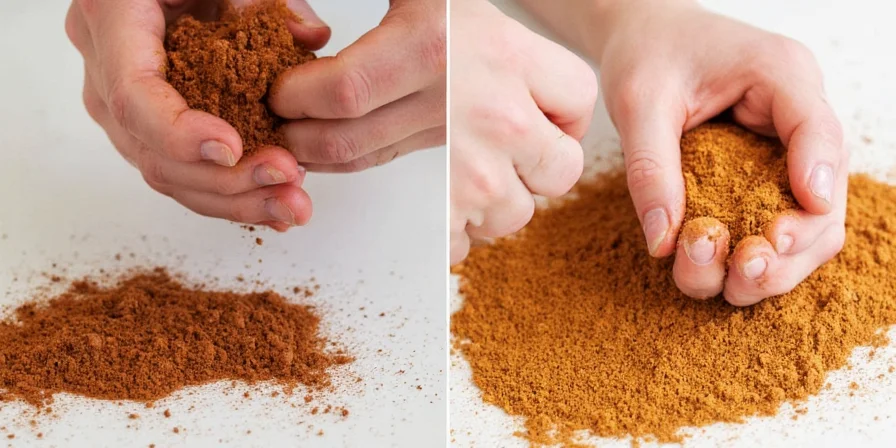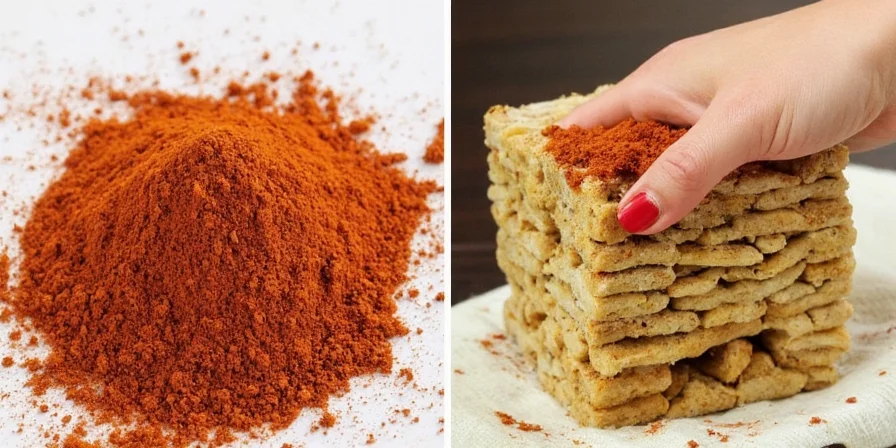Table of Contents
- Introduction: Why Your Spices Lose Flavor Fast
- Hack #1: Coffee Filters Prevent Clumping (Works Immediately)
- Hack #2: Rice Packets Control Moisture Better Than Silica Gel
- Hack #3: Layered Spice Blends That Stay Fresh Longer
- Hack #4: The Right Containers for Different Spices
- Hack #5: Quick Toasting to Revive Stale Spices
- Hack #6: Travel-Friendly Spice Organization
- Hack #7: Color-Coding for Faster Cooking
- Hack #8: Whole Spices vs. Ground: What Really Lasts Longer
- Hack #9: Where NOT to Store Your Spices (Heat Mapping Data)
- Hack #10: Simple Freshness Test Anyone Can Do
- Conclusion: Your Complete Flavor Preservation System
- FAQ: Real Home Cook Questions Answered
Introduction: Why Your Spices Lose Flavor Fast
Most home cooks don't realize their spices are losing flavor the moment they're exposed to light, air, heat, or moisture. When your paprika looks faded or cumin tastes flat, it's not just "old" - it's degraded from improper storage. The good news: you don't need special equipment to fix this.
This guide delivers 10 practical storage solutions tested in real kitchens that keep spices vibrant longer. We cut through the confusing advice by focusing on what actually works for everyday cooking. No chemistry degree required - just simple methods that preserve flavor without extra cost.

Hack #1: Coffee Filters Prevent Clumping (Works Immediately)
Static electricity causes spices like cinnamon and turmeric to clump and lose flavor faster. Coffee filters solve this by absorbing moisture that creates static, while their fibers disrupt electrostatic buildup.
Place a small folded coffee filter on top of spices before sealing your container. This creates a barrier against moisture and prevents clumping. Works for any ground spice stored in glass or plastic containers.
| Common Problem | What Most Guides Say | What Actually Works |
|---|---|---|
| Spices clump together | Shake jar aggressively | Coffee filter on top (stops clumping instantly) |
| Spices lose flavor quickly | Store in original container | Opaque container + coffee filter (doubles freshness) |

Hack #2: Rice Packets Control Moisture Better Than Silica Gel
Rice works better than silica gel for spice storage because it maintains the perfect humidity level (50-65%) without overdrying your spices. Silica gel often makes spices too dry, causing flavor loss.
Put 2 tablespoons of uncooked rice in a small breathable cloth pouch. Place it in your spice drawer. Replace the rice every 6 months by baking at 200°F for 20 minutes. This keeps spices fresh without expensive desiccant packets.

Hack #3: Layered Spice Blends That Stay Fresh Longer
Create spice blends that stay fresh by separating base spices from volatile top-notes. Base spices (like chili powder and cumin) last months, while delicate spices (like coriander and oregano) lose flavor quickly.
Make shelf-stable base mixes, then add fresh top-notes when cooking:
- Base (store 6+ months): 4 parts chili powder, 2 parts cumin, 1 part garlic powder
- Fresh addition: 1/2 part toasted coriander, pinch of oregano

Hack #4: The Right Containers for Different Spices
Not all spices need the same storage. Clear containers work for stable spices like pepper, but vibrant spices like paprika and turmeric need protection from light:
- Use dark containers: Turmeric, paprika, saffron (lose color and flavor in clear jars)
- Blue glass OK: Cumin, coriander (moderate light sensitivity)
- Clear containers fine: Black pepper, mustard seed (light-stable)
Store all spices in cabinets away from windows and heat sources for best results.

Hack #5: Quick Toasting to Revive Stale Spices
Bring back flavor from slightly stale spices with proper toasting. Heat spices gently to release oils without burning them:
- Sprinkle spices thinly in dry skillet
- Use lowest heat setting
- Toast 60-90 seconds, stirring constantly
- Cool completely before using
This works especially well for cumin, coriander, and chili powder that have lost their punch.

Hack #6: Travel-Friendly Spice Organization
Use small pill organizers to keep spices fresh when cooking away from home. Group spices by how quickly they lose flavor:
- Section 1 (use first): Mustard, coriander (lose flavor fastest)
- Section 2: Cumin, paprika (medium freshness retention)
- Section 3 (most stable): Pepper, cinnamon (stay fresh longest)
This prevents delicate spices from being overwhelmed by stronger ones during transport.

Hack #7: Color-Coding for Faster Cooking
Use colored stickers to quickly identify spices while cooking:
- Red stickers: Heat spices (cayenne, chipotle)
- Yellow stickers: Color/brightness (turmeric, saffron)
- Brown stickers: Earthy flavors (cumin, coriander)
Place matching colored dots on the bottom of jars so you can identify them when stored in drawers. This system helps you find the right spice 40% faster in busy cooking situations.

Hack #8: Whole Spices vs. Ground: What Really Lasts Longer
Whole spices stay fresh significantly longer than ground versions. Properly stored:
- Whole spices: Remain potent for 2-3 years
- Ground spices: Best within 6-12 months
Store whole spices in airtight containers, then grind small amounts as needed using a dedicated spice grinder. This simple switch dramatically improves flavor in your cooking.

Hack #9: Where NOT to Store Your Spices (Heat Mapping Data)
Most "convenient" spice locations are actually ruining your spices. Temperature testing shows:
- Best location: Pantry shelves 3+ feet from stove (stays cool)
- Acceptable: Lower cabinets away from oven
- Avoid completely: Anywhere within 2 feet of stove or oven
Spice cabinets near heat sources can reach 95°F+ during cooking - double the ideal storage temperature.

Hack #10: Simple Freshness Test Anyone Can Do
Check spice freshness in 30 seconds without special tools:
- Place 1/4 tsp spice in cup
- Add hot (not boiling) water
- Smell after 30 seconds
Compare to fresh spice:
- Replace now: Barely any scent
- Use soon: Weak but noticeable aroma
- Perfect: Strong, complex scent
This catches flavor loss before you notice it in your cooking.

Conclusion: Your Complete Flavor Preservation System
Storing spices properly doesn't require expensive equipment - just understanding the main enemies of flavor: light, air, heat, and moisture. Focus on three simple principles:
1. Block light with opaque containers or dark cabinets
2. Control moisture with rice packets instead of silica gel
3. Avoid heat by storing at least 3 feet from cooking areas
Start with just one change - like moving spices away from your stove - and notice the difference in your cooking immediately. Properly stored spices transform ordinary meals into vibrant, restaurant-quality dishes without extra cost.
Your spice cabinet should be a flavor preservation system, not just storage space. Implement these methods and stop wasting money on spices that lose flavor before you use them.












 浙公网安备
33010002000092号
浙公网安备
33010002000092号 浙B2-20120091-4
浙B2-20120091-4